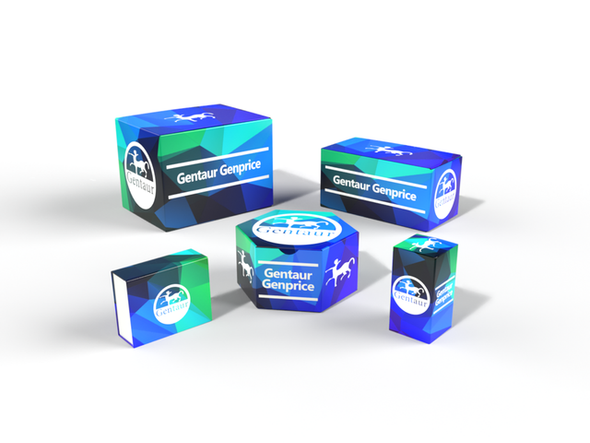Description
Mouse Anti-Human Angiopoietin-2 / Ang-2 Antibody | 101-M102 | Gentaur UK, US & Europe Distribution
Species: Anti-Human
Host / biotech: Mouse
Comment: N/A
Label: N/A
Clone / Antibody feature: (#1F29)
Subcategory: Monoclonal Antibody
Category: Antibody
Synonyms: ANGPT2; ANG2; AGPT2
Isotype: IgG2
Application: WB, IHC (P)
Detection Range: WB: Use at 1:500-1000; IHC: 1:100-200
Species Reactivity/Cross reactivity: Human
Antigen: recombinant human Angiopoietin-2
Description: Angiopoietin2 (Ang2; also ANGPT2) is a secreted glycoprotein that plays a complex role in angiogenesis and inflammation. Mature Ang2 is 478 amino acids (aa) in length. It contains one coiledcoil domain (aa 166-248) that mediates multimerization, and a C-terminal fibrinogen like domain (aa 275-495) that mediates receptor binding. Under reducing conditions, secreted monomeric Ang2 is 65-66 kDa in size. Under nonreducing conditions, both natural and recombinant Ang2 form 140 kDa dimers, 200 kDa trimers, and 250-300 kDa tetramers and pentamers. Alternate splicing generates a short isoform that lacks 52 amino acids (aa) preceding the coiledcoil domain. Mature human Ang2 shares 86% aa sequence identity with mouse and rat Ang2. Ang2 is widely expressed during development, but it is restricted postnatally to highly angiogenic tissues such as the placenta, ovaries, and uterus. It is particularly abundant in vascular endothelial cells (EC) where it is stored in intracellular WeibelPalade bodies. Both Ang2 and the related Angiopoietin1 (Ang1) are ligands for the receptor tyrosine kinase Tie2. While Ang1 is a potent Tie2 agonist, Ang2 may act as either a Tie2 antagonist or agonist, depending upon its state of multimerization. The higher the order of oligomer, the more effective Ang2 becomes as a Tie2 agonist. The short isoform appears to block the binding of either Ang1 or full-length Ang2 to Tie2. Ang2 functions as a proangiogenic factor, although it can also induce EC death and vessel regression. Upon its release from quiescent EC, it regulates vascular remodeling by promoting EC survival, proliferation, and migration and destabilizing the interaction between EC and perivascular cells. Ang2 is required for postnatal vascular remodeling, and it cooperates with Ang1 during lymphatic vessel development. It mediates the upregulation of ICAM1 and VCAM1 on EC, which facilitates the adhesion of leukocytes during inflammation. Ang2 is upregulated in both the endothelium and tumor cells of several cancers as well as in ischemic tissue. Its direct interaction with Integrins promotes tumor cell invasion. Ang2 also promotes the neuronal differentiation and migration of subventricular zone progenitor cells.
Purity Confirmation: N/A
Endotoxin: N/A
Formulation: lyophilized
Storage Handling Stability: Lyophilized samples are stable for 2 years from date of receipt when stored at -20°C. Reconstituted antibody can be aliquoted and stored frozen at < -20°C for at least six months without detectable loss of activity.
Reconstituation: Centrifuge vial prior to opening. Reconstitute the antibody with 500 µl sterile PBS and the final concentration is 200 µg/ml.
Molecular Weight: N/A
Lenght (aa): N/A
Protein Sequence: N/A
NCBI Gene ID: 285






